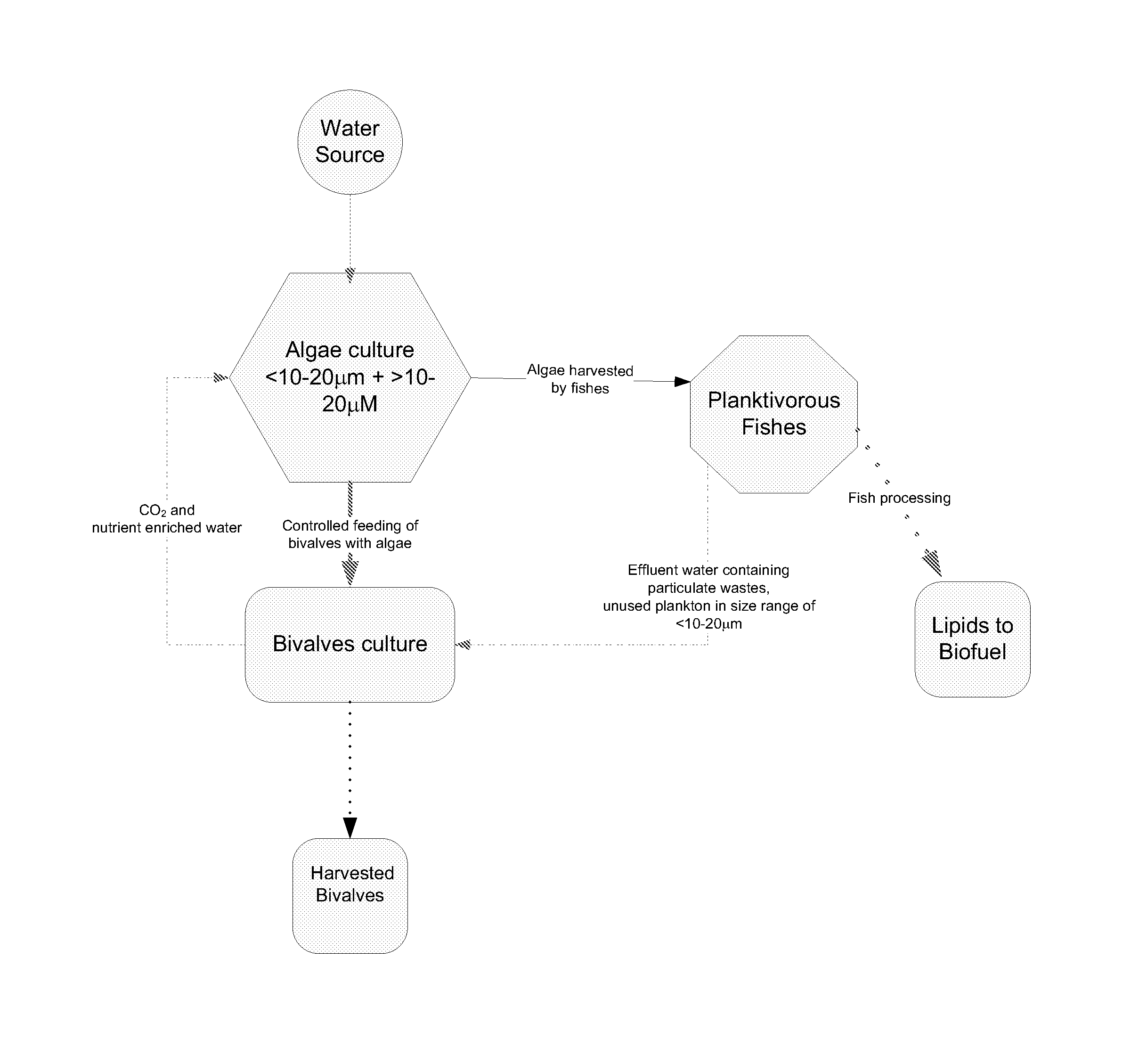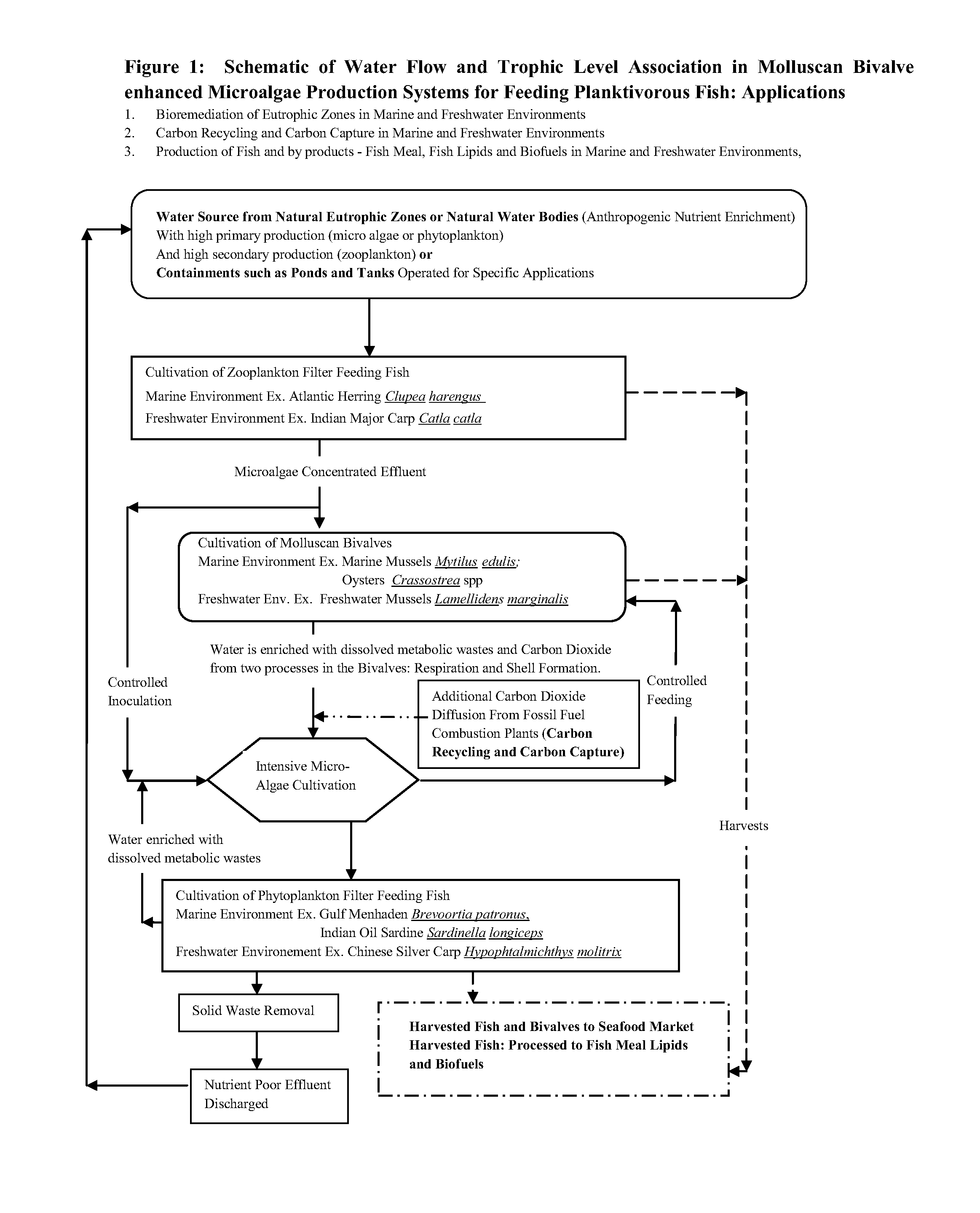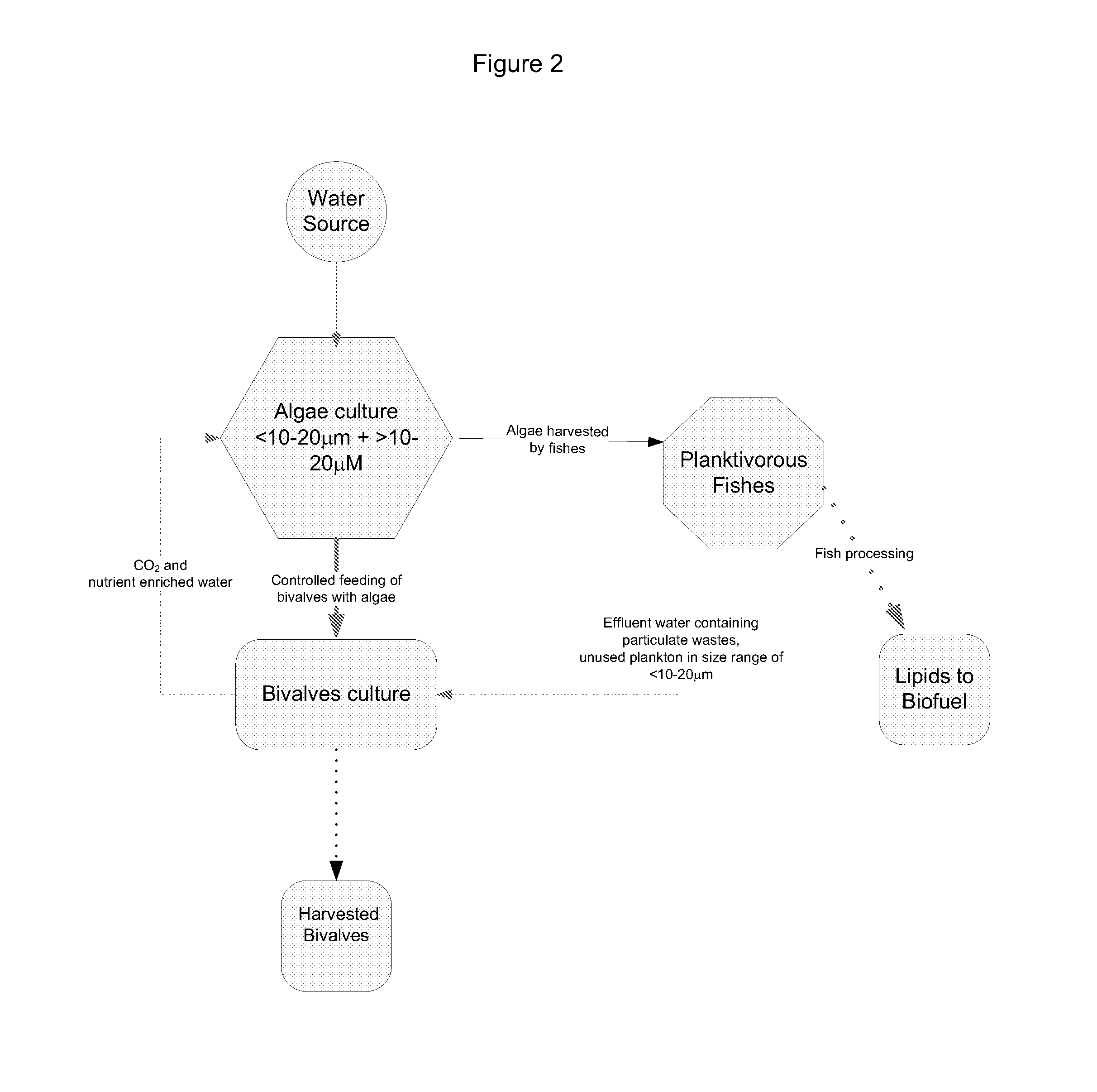Systems and methods for culturing algae with bivalves
a technology of algae and bivalves, which is applied in the field of systems and methods for culturing algae with bivalves, can solve the problems of limiting the growth of the biodiesel industry to less than 1% of the diesel demand, and achieve the effect of greater algae production in the system
- Summary
- Abstract
- Description
- Claims
- Application Information
AI Technical Summary
Benefits of technology
Problems solved by technology
Method used
Image
Examples
Embodiment Construction
[0011]Provided herein are systems and methods for growing algae for extracting lipids and / or production of biofuel. The methods provided herein comprise growing algae in a system that comprises bivalves. The algae, fishes, and bivalves are cultured under conditions that promote nutrient recycling, resulting in gains in algal biomass as well as fish and bivalves biomass. Unlike aquaculture operations where algae is grown as feed for marine invertebrate larvae, the algae provided herein are cultured to accumulate lipids for use as energy feedstocks. The algae are harvested by fish, and the lipids extracted from fish are used to make biofuel. The bivalves cultured in the operation can optionally be sold, as animal feed or human food depending on the species and the market. Depending on the location of the system, the methods provided herein can also be used to remediate eutrophic zones, and enable carbon capture.
[0012]Using algae to produce energy feedstock at an industrial scale requi...
PUM
| Property | Measurement | Unit |
|---|---|---|
| size | aaaaa | aaaaa |
| size | aaaaa | aaaaa |
| size | aaaaa | aaaaa |
Abstract
Description
Claims
Application Information
 Login to View More
Login to View More - R&D
- Intellectual Property
- Life Sciences
- Materials
- Tech Scout
- Unparalleled Data Quality
- Higher Quality Content
- 60% Fewer Hallucinations
Browse by: Latest US Patents, China's latest patents, Technical Efficacy Thesaurus, Application Domain, Technology Topic, Popular Technical Reports.
© 2025 PatSnap. All rights reserved.Legal|Privacy policy|Modern Slavery Act Transparency Statement|Sitemap|About US| Contact US: help@patsnap.com



